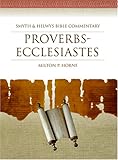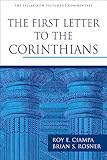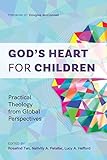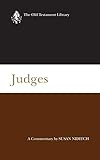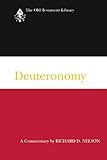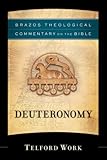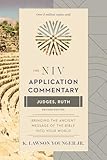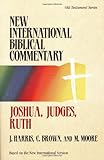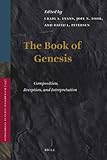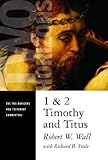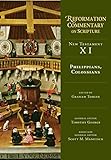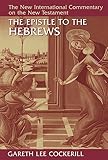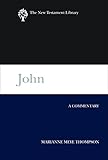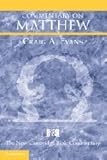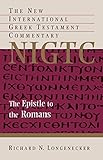Inculturation of the Scriptures in the Light of ‘Inayan’ and ‘Lawa’ for the Evangelization of the Kankana–eys, Philippines
Material type: TextPublication details: Johannesburg South Africa South African Theological Seminary 2020Description: 196 pages PDF A4 Abstract, TOCDissertation note: Master of Theology (Mth) South African Theological Seminary 2020 Summary: It is appealing to embrace the belief that we arrive at a philosophical position based on our worldview, which is largely affected by our socio-cultural settings. Our worldview is so imbedded in our system that it is difficult for us to break away from that viewpoint. The same is true in a Christian context. Every Christian has his/her own way of interpreting the scriptures, and it is only when we step back and objectively examine carefully what we believe against what is written in Scripture that we begin to question how accurately our worldview reflects the biblical teaching (Froise 1989). Our church history reveals that since around the mid–1970s, the issue of contextualization has engaged both the older churches of the Euro-American ̳West‘ and the younger, ̳emergent churches‘ of the non-western world (Maggay2013). The growth of tensions between the two cultures of Euro-American Christianity and the young emergent churches of the non-western world reflects an endless struggle. Apparently, the tendency to base our Christian faith, beliefs and practice on a single particular culture and worldview has enormous significance as modernity is developing. This thesis illustrates how culture (not only influence) frames in a comprehensive way the manner in which a local church community reads, appropriates, and communicates the scriptures. As a specific case in point, this paper examines the beliefs of ‘Lawa’and ̳Inayan’of the Kankana-eysof Benguet and attempts to differentiate between what is purely cultural and what is religious and biblical. ̳Kankana-ey‘refers to people Filipino indigenous group of the Northern Philippines. They are part of a collective group of indigenous people known as the Igorot. The Kankana-eysof Benguet are the majority ethnic group in the municipalities of Kapangan, Bakun, Kibungan, Buguias and Mankayan. ̳Inayan‘signifies fear of the perceived ancestral spirits and the Supreme Being. Thus, this sense of Inayan prevents a person from doing unpleasant things to others or the Deity. ̳Lawa‘is theconcept of bearing a threat or curse: The law reflects a prescribing function of inayan over behavioural choices to ̳conform or else‘it will result in ̳fear‘and ̳dread.‘Lawausually refers to something spoken in a negative statement to emphasize the action to be obeyed. The ̳call to obey‘or lawameans ̳evil, forbidden thing‘, or ̳it is improper, it is wrong, unfit, morally bad, and indecent. ‘It was revealed that there is a strong appeal to inculcate Inayanand Lawa in the light of the scriptures for the evangelization of the Kankana-eys. Ignorance of the practice of spirituality of Lawanda Inayan ,has contributed to religious dualism among the Kankana-eyChristians. Thisthesis suggests a practical approach of inculturation, demonstrating that the Christian faith is powerful enough to deal with spiritual powers in every culture. These practical approaches can break out of the limitations of ̳enlightenment theology’. In this way, the evangelization of the gospel can be more effective in the Christian ministries among the Kankana-eys. Furthermore, this study is intended to be useful in both missionary work and local evangelization.
TextPublication details: Johannesburg South Africa South African Theological Seminary 2020Description: 196 pages PDF A4 Abstract, TOCDissertation note: Master of Theology (Mth) South African Theological Seminary 2020 Summary: It is appealing to embrace the belief that we arrive at a philosophical position based on our worldview, which is largely affected by our socio-cultural settings. Our worldview is so imbedded in our system that it is difficult for us to break away from that viewpoint. The same is true in a Christian context. Every Christian has his/her own way of interpreting the scriptures, and it is only when we step back and objectively examine carefully what we believe against what is written in Scripture that we begin to question how accurately our worldview reflects the biblical teaching (Froise 1989). Our church history reveals that since around the mid–1970s, the issue of contextualization has engaged both the older churches of the Euro-American ̳West‘ and the younger, ̳emergent churches‘ of the non-western world (Maggay2013). The growth of tensions between the two cultures of Euro-American Christianity and the young emergent churches of the non-western world reflects an endless struggle. Apparently, the tendency to base our Christian faith, beliefs and practice on a single particular culture and worldview has enormous significance as modernity is developing. This thesis illustrates how culture (not only influence) frames in a comprehensive way the manner in which a local church community reads, appropriates, and communicates the scriptures. As a specific case in point, this paper examines the beliefs of ‘Lawa’and ̳Inayan’of the Kankana-eysof Benguet and attempts to differentiate between what is purely cultural and what is religious and biblical. ̳Kankana-ey‘refers to people Filipino indigenous group of the Northern Philippines. They are part of a collective group of indigenous people known as the Igorot. The Kankana-eysof Benguet are the majority ethnic group in the municipalities of Kapangan, Bakun, Kibungan, Buguias and Mankayan. ̳Inayan‘signifies fear of the perceived ancestral spirits and the Supreme Being. Thus, this sense of Inayan prevents a person from doing unpleasant things to others or the Deity. ̳Lawa‘is theconcept of bearing a threat or curse: The law reflects a prescribing function of inayan over behavioural choices to ̳conform or else‘it will result in ̳fear‘and ̳dread.‘Lawausually refers to something spoken in a negative statement to emphasize the action to be obeyed. The ̳call to obey‘or lawameans ̳evil, forbidden thing‘, or ̳it is improper, it is wrong, unfit, morally bad, and indecent. ‘It was revealed that there is a strong appeal to inculcate Inayanand Lawa in the light of the scriptures for the evangelization of the Kankana-eys. Ignorance of the practice of spirituality of Lawanda Inayan ,has contributed to religious dualism among the Kankana-eyChristians. Thisthesis suggests a practical approach of inculturation, demonstrating that the Christian faith is powerful enough to deal with spiritual powers in every culture. These practical approaches can break out of the limitations of ̳enlightenment theology’. In this way, the evangelization of the gospel can be more effective in the Christian ministries among the Kankana-eys. Furthermore, this study is intended to be useful in both missionary work and local evangelization.
| Item type | Current library | Collection | Call number | URL | Copy number | Status | Date due | Barcode | |
|---|---|---|---|---|---|---|---|---|---|
 Thesis
Thesis
|
South African Theological Seminary Online Resource | Electronic Holdings | Link to Resource | 1 | Available | 0000000011433 |
Master of Theology (Mth) South African Theological Seminary 2020
There are no comments on this title.
Log in to your account to post a comment.

